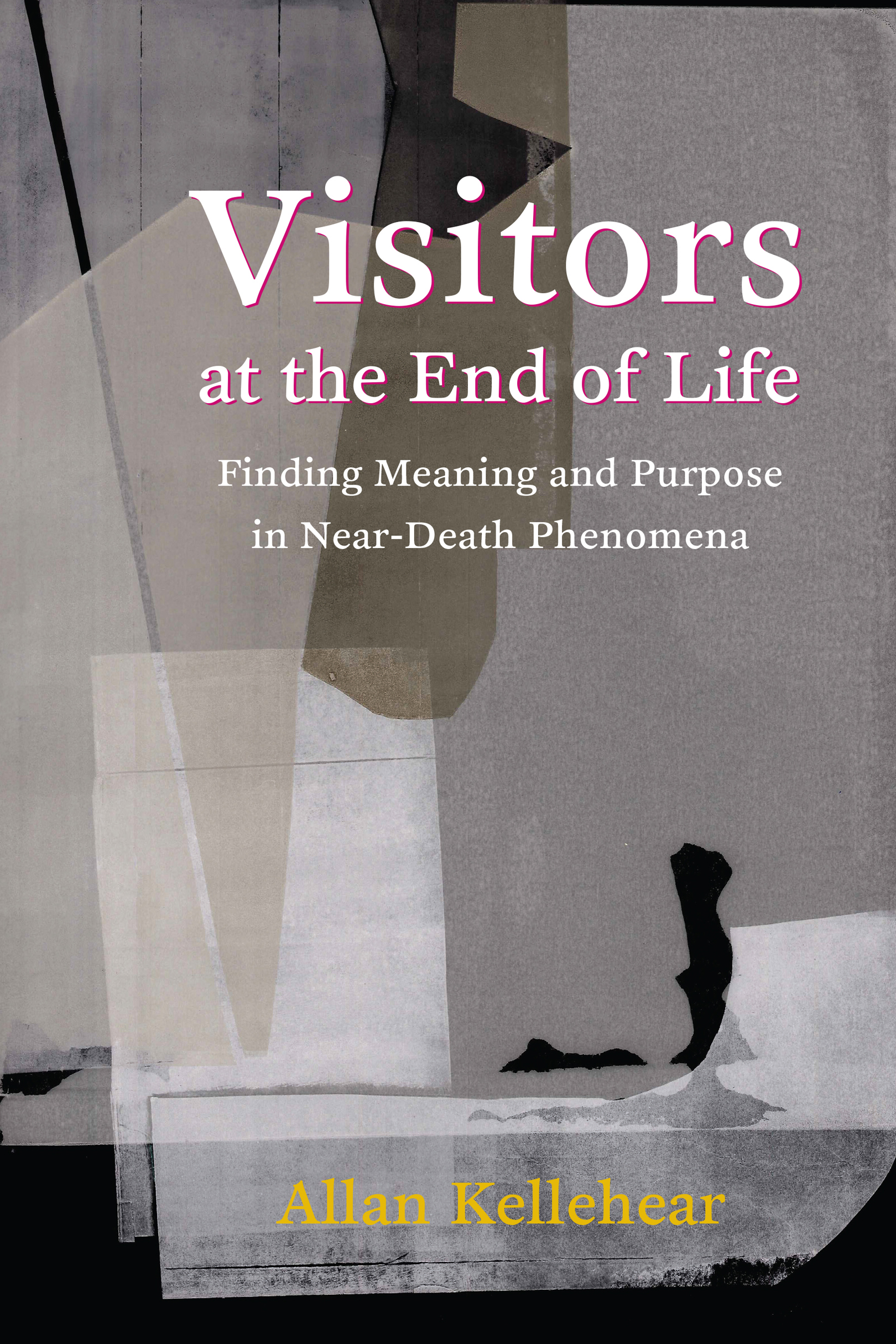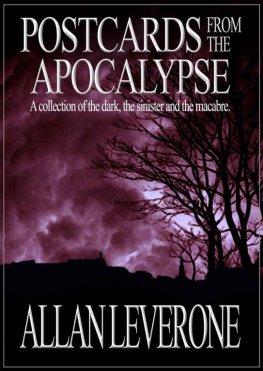Allan Kellehear - Visitors at the End of Life
Here you can read online Allan Kellehear - Visitors at the End of Life full text of the book (entire story) in english for free. Download pdf and epub, get meaning, cover and reviews about this ebook. publisher: Columbia University Press, genre: Religion. Description of the work, (preface) as well as reviews are available. Best literature library LitArk.com created for fans of good reading and offers a wide selection of genres:
Romance novel
Science fiction
Adventure
Detective
Science
History
Home and family
Prose
Art
Politics
Computer
Non-fiction
Religion
Business
Children
Humor
Choose a favorite category and find really read worthwhile books. Enjoy immersion in the world of imagination, feel the emotions of the characters or learn something new for yourself, make an fascinating discovery.

- Book:Visitors at the End of Life
- Author:
- Publisher:Columbia University Press
- Genre:
- Rating:3 / 5
- Favourites:Add to favourites
- Your mark:
- 60
- 1
- 2
- 3
- 4
- 5
Visitors at the End of Life: summary, description and annotation
We offer to read an annotation, description, summary or preface (depends on what the author of the book "Visitors at the End of Life" wrote himself). If you haven't found the necessary information about the book — write in the comments, we will try to find it.
Visitors at the End of Life — read online for free the complete book (whole text) full work
Below is the text of the book, divided by pages. System saving the place of the last page read, allows you to conveniently read the book "Visitors at the End of Life" online for free, without having to search again every time where you left off. Put a bookmark, and you can go to the page where you finished reading at any time.
Font size:
Interval:
Bookmark:

Visitors at the End of Life
Visitors at the End of Life
Finding Meaning and Purpose in Near-Death Phenomena
ALLAN KELLEHEAR

COLUMBIA UNIVERSITY PRESS
New York
Columbia University Press
Publishers Since 1893
New YorkChichester, West Sussex
cup.columbia.edu
Copyright 2020 Columbia University Press
All rights reserved
E-ISBN 978-0-231-54402-3
Library of Congress Cataloging-in-Publication Data
Names: Kellehear, Allan, 1955 author.
Title: Visitors at the end of life : finding meaning and purpose in near-death phenomena / Allan Kellehear.
Description: New York : Columbia University Press, [2020] | Includes bibliographical references and index.
Identifiers: LCCN 2019057375 (print) | LCCN 2019057376 (ebook) | ISBN 9780231182140 (hardback) | ISBN 9780231182157 (paperback)
Subjects: LCSH: Deathbed hallucinations. | Near-death experiences. | SpiritsSocial aspects. | DeathSocial aspects.
Classification: LCC BF1063.D4 K45 2020 (print) | LCC BF1063.D4 (ebook) | DDC 133.9dc23
LC record available at https://lccn.loc.gov/2019057375
LC ebook record available at https://lccn.loc.gov/2019057376
A Columbia University Press E-book.
CUP would be pleased to hear about your reading experience with this e-book at .
Cover image: Pym V (dark), 2018 Stephen Dow/Private Collection/Bridgeman Images
Cover design: Chang Jae Lee
Be ye lamps unto yourselves
Be your own reliance
Hold to the truth within yourselves
Be the lamp
Buddha
From 2009 to 2012, I conducted deathbed studies with medical colleagues in India The bereavement researchers Bill Guggenheim and Judy Guggenheim describe the story of a woman named Sonia, who spoke to them about her nine-year-old daughter Valerie, who had died suddenly of a brain hemorrhage. On an evening about six weeks after Valeries death, Sonia recounts:
I went to bed quite early because I had exhausted myself, but I know I was awake. I was lying on my right side, and I felt someone touch my shoulder. I turned over and Valerie was standing there! She seemed real to me. She looked exactly like herself and in good health. She was bright, sort of glowing, and was dressed in a sparkling, dazzling white gown. She said, Mommy, I love you. My headache is gone. Im all right, and I dont want you to worry about me. She was very calm and happy and quite beautiful. Then, suddenly, she was gone.
This book explores our personal experience of visitations by our dead. It is not designed or intended to establish where the dead come from, whether these appearances are some form of hallucination, whether they are pathological, whether they arise from mental illness or organic anomalies. We do not know whether they point reliably to personal survival over death. What we do know is that a large minority of people all over the world commonly experience contact with their deadsometimes regularly, sometimes as one-offsand that there is both an academic and a personal need to know why.
We can establish a broad outline of why the dead contact us by reflecting on a range of typical accounts drawn from the many thousands of personal accounts in books, articles, and social media sources. We can supplement these descriptions and reflections with the long-standing anthropological and folkloric writing about the patterns of assumptions and interaction behind the conduct of the visiting dead. Sometimes, these dead are accompanied by friends, such as beings of light. Where this is the case, we also employ the same methods to understand their behavior.
My first aim in this work is to sketch an outline of an approach to visits from our dead that frequently emerge from the main mystical experiences near deathfrom among near-death experiences, deathbed visions, or visions encountered by bereaved people. I offer insights into why our dead appear to us by drawing inferences and deductions from the usual reasons why the dead tend to visit in other peoples societies and drawing on some of the key rituals governing all human interaction, identifying the purpose and meaning underlying those, and then applying these to our visitation events. The anthropological view has long been that these experiences of visitation are best viewed as extensions of normal, everyday social life. For many traditional societies, that is the normal view. For most modern societies with industrial economies, that view is not.
But like it or not, the appearances of the dead in all societies are not in any way deterred by the fact that some are prepared for their appearance and others are not. The dead come anywayeverywhere. Neither cultural receptivity nor antipathy seems to slow down their appearances among us. The only difference is that more traditional societies have a ready set of explanations for what is going on, and the peoples from the industrial economies do not. An anthropological perspective such as the one I offer here can bridge that gap in our own sense and sensibility toward this enigmatic experience.
It does not matter whether these appearances originate from the mind or from a genuine afterlife reality. What matters most is the social impacts and personal consequences on those who encounter these experiences. In my line of workhospice and palliative careI meet many people who are affected by these common (and commonly difficult to speak about) experiences. Many of them are made uncomfortable, even distressed, when speaking about these experiencesnot because the apparitions upset them (they rarely do!) but because other peoples reactions are so fearful, suspicious, undermining, or dismissive.
On the one hand, so many people think these visits are isolated or freak incidents when they are not. On the other hand, other people commonly believe that the only real questions concern the origins of these visits, but these are not, for those who have them, the key concerns. These perspectives miss both the value and the point of these visitations. At best, they trivialize the people attempting to speak about them. At worst, they marginalize them. There has been a serious gap in ways to talk about these visits that normalizes these types of experiences and the conversations that attempt to discuss them. The second aim of this book, then, is to redress that omission.
I will describe, reflect on, and argue that the ultimate source of these visits from the dead is far less important than understanding the reasons they come into peoples lives in the first place, and what it is they often ask from each of us when they do. This is a humanistic exercise in establishing the social logic behind both the behavior and the motivations in these visits. Their ultimate source does not alter this particular dimension of the experience. Where the postman comes from is far less important than what is delivered.
In their book The Social Life of Spirits, the anthropologists Ruy Blanes and Diana Esprito Santo argue that it is not only spirits who are invisible but much of the world we call culture. We cannot see the so-called market or so-called race. These ideas are not personally tried and tested; they are subjects of social debate and theorizing. There is even debate about the origin of these ideas. All that most of us know is that these ideas are central to our life, and we must make personal sense of them to negotiate our way through, alongside, against, or above and beyond them. Blanes and Santos argue, as I do, that the key question most people ask when they have these experiences is not whether dead beings exist or where they come from but why they have come and how that contact has changed our lives. In the matter of understanding spirits, the purpose of an anthropological perspective is to go beyond psychology, neuroscience, or the metaphysical and understand the social meaning. This is the fundamental task before us.
Font size:
Interval:
Bookmark:
Similar books «Visitors at the End of Life»
Look at similar books to Visitors at the End of Life. We have selected literature similar in name and meaning in the hope of providing readers with more options to find new, interesting, not yet read works.
Discussion, reviews of the book Visitors at the End of Life and just readers' own opinions. Leave your comments, write what you think about the work, its meaning or the main characters. Specify what exactly you liked and what you didn't like, and why you think so.









